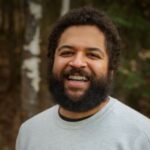
About 10 volunteers stand around a table watching poll worker Darlene Heisserer during a mock election. She’s been volunteering for close to 10 years and still stumbles on some of the questions. It’s a lot to remember. Scenarios range from voters coming in without identification to absentee voters wanting to vote in-person to latecomers wanting to vote after the polls have closed.
A volunteer rushes in out-of-breath, playing the part convincingly.
“Hi, hi, hi I know, it’s 8:02, but there was a bad accident on Lake Otis, and I got here as quickly as I could, and it was an act of God. Can I please vote anyway?” the role-playing volunteer asked.
Everyone laughs.
Heisserer explains she’ll have to fill out a question ballot because they’ve already closed the polls for the day.

The mock election is part of a poll worker training in Anchorage, led by Julie Husmann from the Division of Election ahead of the August 21 primary.
It’s been a hard year for recruiting, Husmann says. They run a youth ambassador program that pays high school students to work the polls and they employ members of the Job Corps program, but most of their workers are volunteers.
“Part of the reason we don’t have the election workers because the people who’ve consistently done it for years and years, they are aging and they can’t do it anymore,” Husmann said. “We’re not getting that new, fresh young blood to continue on.”
Hussman explained to the volunteers that in the primary election, candidates for the Democratic, Independence and Libertarian parties are listed on one ballot and Republicans are listed on the other. Registered Republican, Undeclared and Nonpartisan voters can opt for either ballot while the others only get one choice. That’s because each party makes its own rules.
Husmann says that maintaining voter privacy while helping them understand their options is imperative. She points to a sign that details each ballot’s party affiliations.
“Let’s say they have a choice of a ballot. They’d say, ‘You have a choice of either ballot. Could you please point to whichever one you’d like to receive?’ And then they can point without having to state it out loud,” Husmann said.
Husmann went on to explain that the state prohibits electioneering within 200 feet of a polling place and that includes carrying signs; wearing a candidate’s T-shirt, campaign button or hat; or discussing ballot measures. Then, she demonstrates how to feed a sample ballot into a sturdy black box.
Their current equipment is slated to be upgraded by 2020. Still, Husmann says that the current system doesn’t compromise security. She cautions volunteers to always keep equipment and ballots under lock and key and then asks for any questions. A new volunteer pipes up.
“Any kind of ID works it doesn’t have to be photo?” the volunteer asked.
“Nope, in the state of Alaska we do not ask for photo ID,” Husmann said.
Over the last decade, several states have passed new voter ID laws. Proponents of the laws say they combat election fraud. Opponents say the laws target vulnerable populations who may not have easy access to photo identification like the homeless.
“A lot of places may not have a way of getting a photo ID. Let’s go out to a village, maybe they do not have the accessibility to get photo id,” Husmann said.
Husmann says that Alaska has other ways of combating voter fraud. For example, their system tells them if a voter has already cast an absentee ballot or voted early. A utility bill or, in many cases, a verbal identification from someone working at the polling place is enough to confirm someone’s identity.
Husmann ended the three-hour training with a touch of humor.
“Don’t be scared, it’s gonna be okay. Only give out one ballot is my main thing,” Husmann laughs. “Just because we have two, everybody does not get two. They get one.”
Voters can also choose to vote early or absentee. Early voting starts August 6. The primary includes nine gubernatorial candidates and Alaska’s U.S. Representative seat. The general election takes place on Tuesday, November 6.
Alaska Public Media’s Wesley Early contributed to this story.
Wesley Early covers Anchorage life and city politics for Alaska Public Media. Reach him at wearly@alaskapublic.org and follow him on X at @wesley_early. Read more about Wesley here.
Erin McKinstry is Alaska Public Media's 2018 summer intern. She has an M.A. from the University of Missouri's School of Journalism and a B.A. from Knox College. She's reported stories for The Trace, The Midwest Center for Investigative Reporting, Harvest Public Media, the IRE Radio Podcast, KBIA and The Columbia Missourian.





